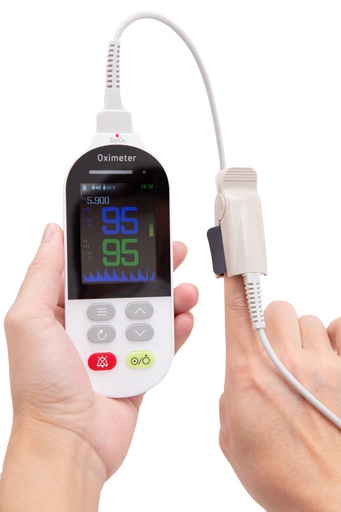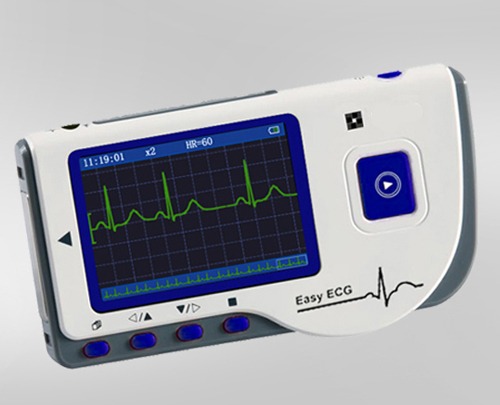Patient monitors are crucial devices in modern healthcare, providing continuous monitoring of vital signs and critical health metrics. In this guide, we explore the different types of patient monitors, their benefits, best practices, and key considerations for healthcare professionals. This comprehensive overview is perfect for anyone interested in enhancing patient care or understanding the technology better.
1. Understanding Patient Monitors
Patient monitors track and display a range of physiological parameters, such as heart rate, blood pressure, oxygen saturation (SpO2), and respiratory rate. These devices help healthcare professionals monitor patients in real-time, allowing for timely interventions when abnormalities arise(Credihealth)(Hospital Store).
Parameter
|
Description
|
Heart Rate
|
Monitors ECG and heart rhythm
|
Blood Pressure
|
Measures systolic and diastolic levels
|
SpO2
|
Tracks oxygen levels in the blood
|
Respiration Rate
|
Monitors breathing rate and efficiency
|
2. Types of Patient Monitors
There are several types of patient monitors, each tailored for specific applications. Below is a table that breaks down the most common types:
| Type | Features | Best For |
|---|---|---|
| Vital Sign Monitors | Basic monitoring (HR, BP, SpO2) | Routine checkups, hospitals |
| Multipara Monitors | Multi-parameter tracking (ECG, temp, CO2) | Intensive care, surgery rooms |
| Remote Patient Monitors (RPM) | Tracks vitals remotely using wireless technology(RPM Healthcare) | Home care for chronic conditions |
Each type serves a unique purpose, from basic routine monitoring to advanced remote solutions that connect patients and healthcare providers outside the hospital setting.

3. Benefits of Using Patient Monitors
Patient monitors offer numerous benefits that are essential in healthcare:
- Improved Patient Safety: Continuous monitoring allows for quick detection of issues like arrhythmias or sudden drops in oxygen levels(Credihealth).
- Reduction in Medical Errors: Real-time, accurate data helps medical staff make informed decisions(Credihealth)(Hospital Store).
- Cost Savings: Early detection and intervention reduce the need for emergency care, decreasing healthcare costs(RPM Healthcare).
Example Case Study: Reduced Readmission Rates with RPM
A recent study showed that implementing Remote Patient Monitoring (RPM) for chronic conditions like heart failure reduced hospital readmission rates by up to 25%. This not only saved costs but also improved patient outcomes(MME).
4. How Patient Monitors Work
Patient monitors collect data using various sensors attached to the patient’s body, such as ECG probes for heart rate or pulse oximeters for oxygen levels. This data is then displayed on the monitor in real-time.
Below is a simplified diagram of how patient monitors function:
[Sensors] → [Data Processing Unit] → [Display Monitor] → [Alerts & Data Transmission]
- Sensors: Detect specific parameters (e.g., heart rate, SpO2).
- Data Processing Unit: Analyzes and interprets the data.
- Display Monitor: Shows the information visually, including waveforms and numeric values.
- Alerts: Triggers alarms when values exceed safe limits(Hospital Store).

5. Key Features to Look for in Patient Monitors
When selecting a patient monitor, consider the following critical features:
| Feature | Importance |
|---|---|
| Accuracy | Ensures reliability and precision in readings. Certified devices are recommended(Credihealth). |
| Alarm Systems | Customizable alarms help in detecting and responding to emergencies(RPM Healthcare). |
| Connectivity | Integration with hospital Electronic Health Records (EHR) for streamlined data sharing(Hospital Store). |
| Battery Life | Essential for continuous monitoring, especially in emergency setups or during power outages(MME). |
These features not only enhance the monitor's effectiveness but also ensure compatibility with existing hospital infrastructure.
6. Best Practices for Using Patient Monitors
To maximize the effectiveness of patient monitors, healthcare facilities should follow these best practices:
- Regular Calibration and Maintenance:
- Ensure all equipment is calibrated regularly to provide accurate readings. Regular checks prevent malfunction and data inaccuracies(MME).
- Tip: Follow a monthly maintenance schedule and keep detailed logs.
- Cybersecurity Protocols:
- Patient monitors, especially RPM devices, must comply with privacy standards like HIPAA to protect patient data(RPM Healthcare)(Samsung Business Insights).
- Implement strong password protections and ensure that all software updates are applied promptly to avoid data breaches.
- Comprehensive Staff Training:
- Healthcare staff should receive training on using different types of patient monitors. This training should cover basic functions, alarm management, and troubleshooting(MME).
- Consider annual refreshers to keep all staff updated on new technology features.

7. Challenges and Considerations with Remote Patient Monitoring (RPM)
While RPM offers great advantages, it also comes with challenges. For example:
| Challenge | Solution |
|---|---|
| High Equipment Costs | Insurance companies often cover these costs, but verifying coverage before deployment is crucial(Samsung Business Insights). |
| Patient Compliance | Choose user-friendly devices like tablets or wearable monitors to increase patient engagement(RPM Healthcare). |
By addressing these challenges, healthcare providers can optimize RPM programs and achieve better patient outcomes.
8. Conclusion
Patient monitors are indispensable in modern healthcare, offering critical benefits like enhanced safety, cost reduction, and improved patient outcomes. Whether in hospitals or remote settings, choosing the right patient monitor and following best practices ensures high-quality care and efficiency.
If you’re considering upgrading your patient monitoring system, ensure the devices meet your clinical needs, are EHR-compatible, and provide secure data management solutions.

For healthcare facilities looking to enhance patient care, investing in modern patient monitors is a step toward improved safety and efficiency. Contact us today for a consultation on selecting the best patient monitoring solutions for your needs.
References:
- Real-world case studies on RPM effectiveness(RPM Healthcare).
- Data from recent hospital surveys on patient monitor integration(Samsung Business Insights).
- Industry insights and statistics from top healthcare technology providers(MME).